engineersheaven's Idea / Prospect
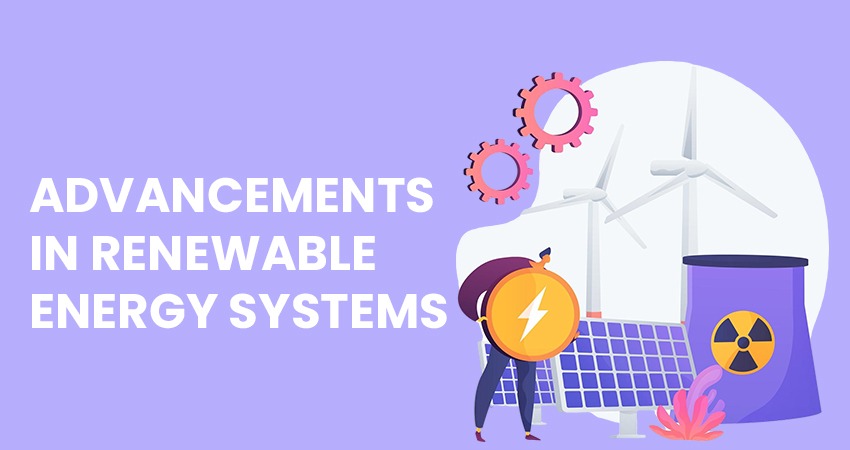
The world is changing fast. Energy demands soar to new heights. But conventional sources are drying up. Fossil fuels harm the planet. The solution? Renewable energy. It is infinite, renewable, and green. Solar Power: The Rising Star Solar energy is booming. Prices have plummeted. Efficiency has never been higher.
- Perovskite Solar Cells: These are changing the game. They are also cheaper, lighter , and more flexible than silicon panels. Now , scientists are turning their attention to commercializing them for general use.
- Floating Solar Farms:The land we have is limited. But bodies of water allow for space. Solar panels mounted on rafts on lakes and reservoirs generate power without occupying land. This type of technology is being heavily invested in by countries such as China and India.
- Solar Windows: Rethink buildings that generate their electricity. It is now possible with transparent solar panels. Skyscrapers may soon serve as power plants.
Wind: Bigger and Better
Wind power is no longer just about giant turbines in open fields. Innovations are increasing its efficiency and making it more accessible.
- Vertical Axis Wind Turbines (VAWTs): Unlike traditional turbines, these can work well in cities. They take up less room and can catch wind from all angles.
- Floating Wind Mill:Deep-sea wind farms are the new big thing. Conventional turbines require shallow seas. But floating turbines can be deployed anywhere in the ocean. They take advantage of stronger, steadier winds.
AI and IoT are bringing smart turbine maintenance needs that are predicted by sensors. Machine learning optimizes blades for optimal performance. It minimizes downtime and increases production. Hydropower: Old but Gold One of the oldest renewable sources is hydropower. But it's adapting to the technology of the time.
- Pumped hydro: Surplus energy pushes water uphill. Later, it runs down, generating electricity as needed.
- Run-of-River Hydropower: Dams damage ecosystems. It utilizes natural river flow. It generates electricity with a low carbon footprint.
- Tidal and Wave Energy: Oceans cover 70% of Earth. Their power is immense. New designs are harnessing energy from tides and waves. Countries like the UK and Canada are pioneering on this front.
Biomass and Biofuels: Nature's Power
Organic waste can be turned into energy. Resourceful organic waste The comeback of biomass and biofuels.
- Algae Biofuel Algae grow rapidly and need little space. They generate biofuel without competing for food crops. Researchers are increasing production for commercial use.
- Waste-to-Energy Plants: Garbage is a problem. But new technology turns waste into electricity and biofuels. This system is being adopted in cities all over the world to combat landfills.
- Advanced Biogas Systems: Organic waste comes from farms and food industries. New digesters transform it into methane that can be used to produce energy. Raising fewer cattle means less waste and emissions.
Energy Storage: The Big Deal
Renewable power is not always there. It doesn't shine at night. The wind doesn't always blow. And that's where energy storage solves the problem.
- Solid-State Batteries: these are more durable, charge faster, and are safer than lithium-ion batteries. Companies are scrambling to bring them to market.
- Gravity energy storage: Heavyweights are lifted using excess power. They fall later, generating electricity. This fundamental method will give you long-term storage.
- Hydrogen Fuel Cells: Hydrogen acts as an efficient storage medium for excess energy. When power is required, fuel cells convert it back into electricity. A lot of people think we could be powered by hydrogen in the future.
- Smart Grids: The conventional power grid is archaic. They don't deal well with variable renewable power. This is why smart grids are essential. AI helps smart grids balance supply and demand. This helps avoid blackouts and increases efficiency.
- Blockchain in Energy: Blockchain assures secure energy transactions. It allows for energy trading to be transparent and automated. Companies are starting to deploy this technology.
The Road Ahead
The future of energy looks bright. Renewables Become More Efficient, Affordable, and Accessible Transitioning to green renewable energy systems is not a choice now. It is a necessity. We at Engineer's Heaven are ahead of the curve. We'll be bringing you the latest on technology, engineering, and sustainability. So, keep an eye out for more energy insights that we have with us in the future. Together, we can create a cleaner, greener world! (Disclaimer: These statistics could be different in different parts of the world and on different timelines. These statistics have been generated based on data available till 2025 or a relevant period.)
(Disclaimer: This statistics could be different in different part of World and Different timeline. this statistics has been generated based on data available till 2025 or relavant time span.)
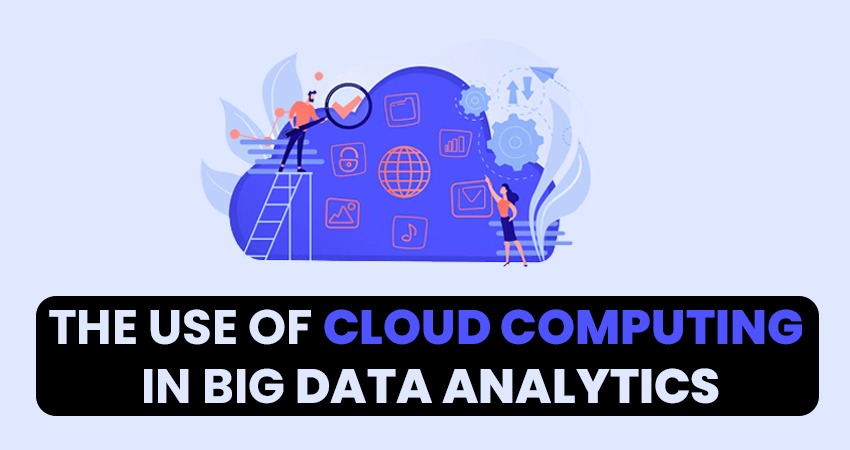
We live in the world of big data. Businesses, governments, and researchers use it to identify patterns, inform decisions, and optimize processes. But working with big data is no easy task. Both traditional storage and processing methods fail when the data becomes too large. This is where cloud computing in big data analytics comes in very handy.
Big data analytics has immensely improved with the help of cloud computing. It offers flexible, scalable, and cost-effective solutions. Enterprises no longer have to spend on costly hardware. Instead, they can process data quickly and efficiently using cloud platforms.
We discuss new technologies that are helping to change the way of life at Engineers Heaven. This blog will explore how cloud computing improves big data analytics and makes it the best choice for modern data-driven industries.
What is the Role of Cloud Computing in Big Data
It demands enormous storage and computing power. Cloud computing offers both. It enables companies to store and work with vast amounts of data without physical infrastructure. Rather than purchasing servers, companies can rent servers from cloud providers.
Cloud platforms provide resources on demand. Companies can expand or contract as required. Cloud computing is an ideal solution for big data analytics because of its flexibility.
benefits of cloud computing in big data
- Scalability and Flexibility
Big data workloads fluctuate. For some companies, they may require tremendous computing power on certain days. On other days, it may need less. And so does cloud computing. Organizations can also scale resources up or down in real-time. This saves waste and costs money.
- Cost-Effective Solutions
The cost of setting up a traditional data center is high. It needs hardware, upkeep , and IT personnel. These costs are eradicated with cloud computing. Businesses receive a utility price only for what they consume. This pay-per-use model certainly lowers the costs of big data analytics.
- High-Speed Processing
Powerful computing is required because data analytics is needed. Cloud platforms use distributed computing systems. This means information is processed and streamed concurrently between multiple servers across the group. The result? Faster insights & faster decision-making.
- Complex Interactions with AI and Machine Learning
AI and ML models are often found in big data. These technologies thrive in the perfect environment provided by cloud computing. That means cloud providers offer built-in AI tools that help businesses analyze their data more effectively. It leads to more accurate data-driven predictions.
- Accessibility and Collaboration (Remote)
Data teams typically operate in remote environments. Cloud computing allows access from anywhere. Workers can derive insights from data anywhere around the globe. This improves collaboration and productivity.
- The Role of Cloud Computing in Revolutionizing Industries
Big data is crucial to so many industries. It is easy to process and analyze information on cloud computing. Here are some
examples of how this works in the real world:
- Healthcare
Hospitals produce enormous amounts of patient information. Physicians also use cloud analytics to predict diseases, optimize treatment, and manage hospital resources more effectively.
- E-Commerce
Big data helps online retailers track customer behavior. Cloud platform helps them personalize recommendations, optimize pricing, and prevent fraud.
- Finance
Banks and financial institutions conduct a real-time analysis of transactions. Cloud computing enables them to identify fraud, calculate risks, and make data-driven investment decisions.
- Manufacturing
Manufacturing plants have turned to cloud hosts for big data analytics on predictive maintenance. Sensors track machinery, and cloud AI forecasts failures before they occur. This decreases downtime and cuts costs.
- Smart Cities
Governments use cloud computing to study traffic, energy consumption, and public safety. This aids in more intelligent, more efficient city functionality.
Top Cloud Platforms for Big Data Analytics
Many cloud providers have specific tools for big data analytics. With this in mind, here are some of the most popular platforms:
- Amazon Web Services (AWS) – This includes platforms like Amazon Redshift, AWS Glue, and EMR for data processing on a massive scale.
- Microsoft Azure – Includes Azure Synapse Analytics, Databricks, and Microsoft AI-driven data solutions.
- GCP — Google Cloud Platform — Offers BigQuery, Dataflow and AI-driven analytics
- IBM Cloud – Offers Watson AI and data analytics capabilities.
The company offers platforms enabling enterprises to address intricate data problems effectively.
The Role of Cloud Computing in the Future of Big Data
Cloud computing will forever evolve. Big data analytics will benefit from the convergence of edge computing, AI, and quantum computing. More companies will adopt a mix of public and private cloud infrastructure through hybrid cloud models.
At Engineer’s Heaven, we understand the importance of being ahead of the technology curve. Cloud-based big data analytics are no longer optional but the need of the hour. Companies that adopt these technologies are the future.
(Disclaimer: This statistics could be different in different part of World and Different timeline. this statistics has been generated based on data available till 2025 or relavant time span.)
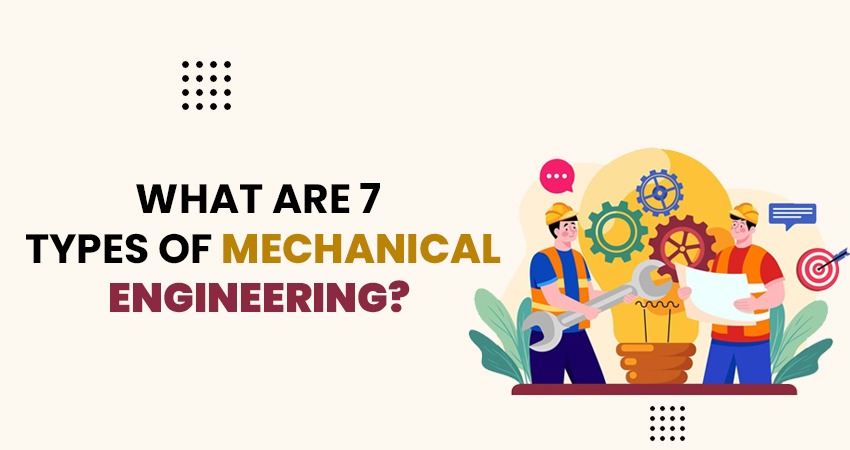
Mechanical engineering has a great deal of breadth. It affects nearly every aspect of modern life. From the vehicles we drive to the machines that build our cities, this domain fuels innovation. However, did you know that mechanical engineering comes in different types? How many types of mechanical engineering are there?
Welcome back to Engineer’s Heaven, where we look at the various avenues that engineers can follow. If you’re considering a career in mechanical engineering—or you’re just curious—this guide will help you understand the seven major branches of this field.
Automotive Engineering
The branch of engineering that deals with the design, development and production of vehicles is known as automotive engineering. Automotive engineers design and manufacture vehicles with a focus on safety, speed, and efficiency. They design engines, refine aerodynamics, and develop new materials to make lighter vehicles.
Automotive engineers are in demand as we move toward electric and self-driving cars. They are instrumental in determining the future and direction of transport.
Aerospace Engineering
Aerospace engineering involves the design and development of aircraft, spacecraft and satellites. These engineers help planes fly safely and rockets reach space without wasting energy.
They develop aerodynamics, propulsion systems and lightweight materials. Aerospace engineering is an exciting and growth-oriented field with the advent of space travel and commercial aviation.
Manufacturing Engineering
Manufacturing engineering consists entirely about manufacturing. It relates to designing, developing and improving manufacturing processes. Engineers who work in this area ensure that products are produced efficiently and with high quality.
From assembly lines to 3D printing, they optimize manufacturing processes to minimize waste and maximize productivity. Manufacturing engineers are needed across industries to manufacture the products that companies sell.
Thermal Engineering
Thermal engineering is about heat and energy transfer. It is an essential consideration in the design of power plants, engines, and HVAC systems.
Engineers in this field focus on improving energy usage efficiency. They create advanced cooling systems for electronics, enhance storage of energy, and develop sustainable energy alternatives such as solar energy.
Mechatronics Engineering
Mechatronics is a combination of mechanical, electrical and computer engineering. It is specialized in Smart machine and automation system design.
“Think robotics, self-driving vehicles, sophisticated manufacturing solutions. Mechatronics engineers design intelligent machines that sense, process, and actuate. This field is fundamental for sectors such as robotics, medical devices, or industrial automation.
Marine Engineering
Marine engineers plan and maintain vessels, submarines, and offshore structures. They develop propulsion systems, fuel efficiency and ship safety.
This area is vital for international commerce since the majority of goods are moved by water. Marine engineers are addressing the requirement for cleaner and more efficient ships through hybrid propulsion and alternative fuel sources.
Structural Engineering
Structural engineering, though often associated with civil engineering, is also an essential component of mechanical engineering. It covers strong and durable structures of designed elements.
Mechanical engineers in this branch deal with mega projects such as bridges, buildings, and industrial plants. They help ensure that structures are able to tolerate stress, vibrations, and extreme weather events.
Why Mechanical Engineering?
Career Opportunities in Mechanical engineering never end. It combines creativity, problem-solving, and technical know-how. No matter if your passion lies in cars, aircraft, robotics, or even energy, there is a route for you.
Welcome to engineers heaven, the ultimate destination for all things engineering! So start now with us and begin your engineering journey.
Visit us at Engineer’s Heaven.
(Disclaimer: This statistics could be different in different part of World and Different timeline. this statistics has been generated based on data available till 2025 or relavant time span.)
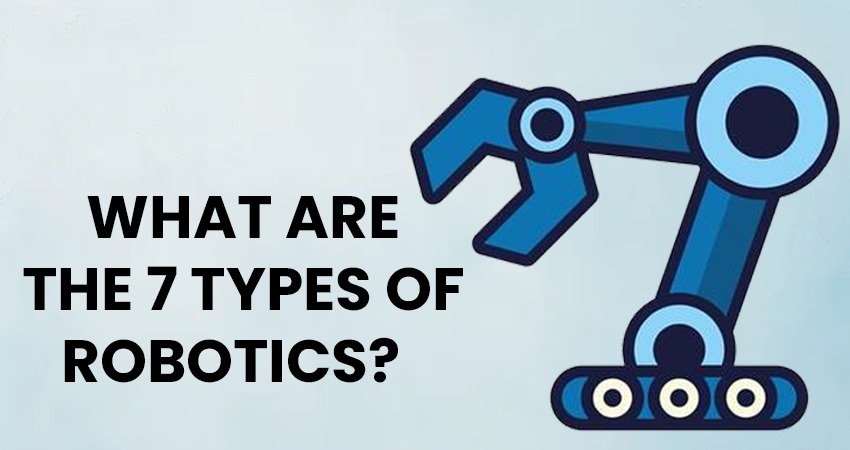
Robotics is shaping the world like never before. Robots have made a decisive entry into modern life, from industries to homes. But did you know different types of robotics have been designed to complete various jobs? Identifying these categories helps us understand how quickly technology is progressing.
Regarding Engineers Heaven, our mission is to educate and inspire by sharing knowledge about robotics, automation, etc. To understand this, we must dive into the seven types of Robotsand what they do.
Autonomous Mobile Robot (ARMs)
Mobile Robots (AMRs) can navigate the environment without human intervention. They are equipped with sensors, artificial intelligence, and machine-learning systems that enable them to navigate independently of direct human control.
These robots are commonly deployed in warehouses, hospitals, and even residences. They assist with logistics, surveillance, and delivery services. AMRs are used in warehouse automation, and companies like Amazon have leveraged their power to make their operations faster and smoother.
AGVs (Automated Guided Vehicles)
AGVs, on the other hand, follow a predefined path, unlike AMRs. They use tracks, magnetic strips, or predefined routes to transport goods.
AGVs are seen everywhere in factories and large warehouses. They expedite production by transferring materials without human involvement. Industries deploy them and use themto cut down on labor expenses and increase workplace safety.
Articulated Robots
Robots that have multiple joints make it possible to move precisely. That looks like a human arm , also called a robotic arm.
Articulated Robots Industrial robots are frequently seen in factories, welding job sites, painting job sites, and assembly lines. So, how does this make them suitable for repetitive action with extreme accuracy? They are critical in the automobile and electronics sectors.
Humanoid Robots
Humanoid robots have human appearance and human capabilities. They have arms, legs, and even facial expressions. They exist to converse with humans in the way we do.
These robots are employed in customer service, education, and even healthcare. This one is Sophia, a famous humanoid robot known for being an example of bringing AI into social situations. Humanoid robots help older adults; They accompany older people and support them.
Cobots (Collaborative Robots)
Cobots are not intended to substitute for human workers; rather, they are intended to work side by side with them. They help workers by doing dangerous or repetitive jobs.
Those robots are used every day in industries where safety and efficiency are concerned. They assist on assembly lines, in medical settings, and in research. Unlike traditional robots, cobots don't require protective enclosures. They detect the presence of humans and adjust to collaborate safely with them.
Industrial Robots
Industrial robots are designed for challenging work. They are robust, accurate, and don't tire after working hours.
Industrial robots are commonly used in the automotive, electronics, and metal industries. They do the lifting, cutting, welding, and packaging. Due to their standardization, industrial robots are an efficient way to ensure quality production while lowering costs. They form the backbone of contemporary manufacturing.
Swarm Robots
Swarm robotics is closer to nature, particularly of the social variety found in creatures such as bees or ants. Particular robots operate in groups, using basic rules to accomplish complex actions.
Nevertheless, swarm robots are employed in search and rescue, medical applications, environmental monitoring, etc. They can operate in hazardous environments where humans cannot even proceed. Cooperation makes them well-suited for significant accomplishments.
The Future of Robotics
The field of robotics is changing at a remarkable pace. Animal obesity is a big problem, but as AI and machines lessen, they'll become more intelligent and autonomous. The range of possibilities is vast, from self-driving cars to robotic surgeons.
In Engineer’s Heaven , We believe in being ahead of the curve. So, in case it helps, get lost in our deep ocean of information about the latest advancements in robotics and engineering. Engineers Heaven – Your Gateway to the Future of Technology for Students, Professionals, and Enthusiasts Join Engineers Heaven for more info on robotics and engineering and keep up with the automation revolution!
(Disclaimer: This statistics could be different in different part of World and Different timeline. this statistics has been generated based on data available till 2025 or relavant time span.)
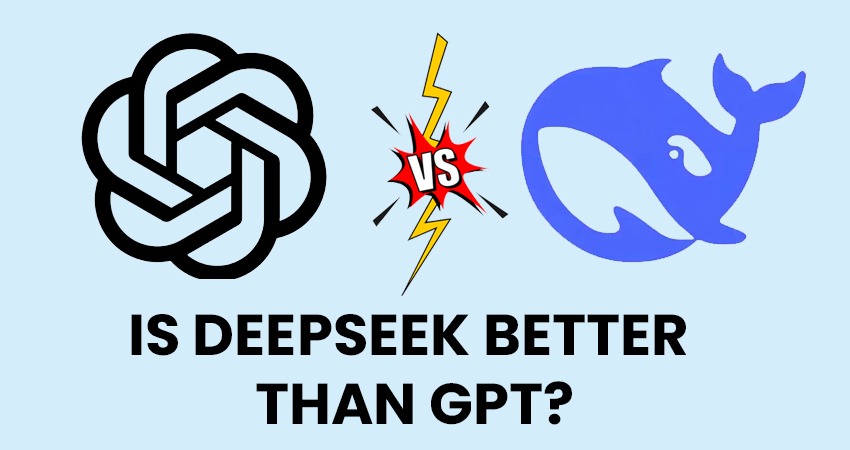
Artificial intelligence is developing rapidly. New models challenge the old ones every few months. Some thoughts: A new competitor in AI is DeepSeek AI, which claims to compete with, if not beat, GPT models. But is it better? Let's break it down.
Technologies evolve daily, and we at Engineers Heaven strive to keep you updated with the latest tech trends. This guide will help you see how DeepSeek stacks up to GPT and which could be correct.
What is DeepSeek?
To address the urgent need for a versatile AI language, DeepSeek has been developed as a new AI model. It claims to be better, more efficient, and more accurate in reasoning than previous models. They say it processes information more swiftly and generates more precise responses.
Thisis increasingly built and trained in a way that suggests not purely predicting the next word but instead a deep connection with those words themselves. This lets it deal with complex ideas more effectively and produce responses that feel more human.
But is it better than GPT?
How Does GPT Work?
GPT (Generative Pre-trained Transformer) is the AI model of the hour and has been for the past few years. The most recent versions, including GPT-4, rely on considerable datasets to produce human-like answers. ChatGPT and similar LLMs are widely used in chatbots, content generation, coding, and customer support.
GPT's greatest strength is its adaptability. It does well with casual conversations, technical questions, storytelling, and more. However, it has occasional hiccups with factual accuracy and long-term memory.
DeepSeek vs. GPT: What Sets Them Apart
- Accuracy and Reliability
DeepSeek says its generative search provides more precise answers than GPT. It employs a different method of training to mitigate errors in accurate information. However, GPT is better tested and trusted by users.
- Reasoning Ability
DeepSeek's enhanced logical reasoning is one of its additional strengths. In some instances, it can also handle intricate instructions better than GPT. On the other hand, GPT is more informed as it trains on a lot of data.
- Creativity and Writing Style
GPT still retains an edge in creativity. Its reconciliation of more engaging and natural text makes it the best fit for content generation, storytelling, and marketing. While DeepSeek works wonderfully at technical, high-precision tasks, informal writing does not feel natural.
- Speed and Efficiency
DeepSeek aims to improve the speed and performance significantly. It can handle high volume and high velocity to use in real-time applications. GPT is also fast and leaves lags sometimes while handling complex queries.
- Availability & Accessibility
GPT is available on many platforms; DeepSeek has yet to take the world by storm. Many users and businesses are already using GPT-based tools, so it will be harder for DeepSeek to replace them.
Which One Should You Choose?
Whether you need DeepSeek or GPT is a matter of choice.
- Highly Technical Task: If you need high accuracy, you may prefer to go with DeepSeek.
- GPT is still the best option for creativity, natural conversations, and versatility.
Although DeepSeek might look attractive, GPT has succeeded well in different industries.
Final Verdict
DeepSeek may be a new, powerful AI model as it runs on a plethora of advanced search engine-level documentation. However, GPT is still the champion regarding versatility and user assimilation. DeepSeek has been shown to perform better in some use cases, but it still has a long way to go before it can completely replace GPT.
You should test both to find which works better for you and consider the cost of Deepseek vs Chatgpt.AI is advancing quickly, and subsequent versions may change the balance. Until then, keep reading about AI and tech!
For AI, programming, and tech innovations discussions from the experts, explore Engineer’s Heaven.
(Disclaimer: This statistics could be different in different part of World and Different timeline. this statistics has been generated based on data available till 2025 or relavant time span.)
